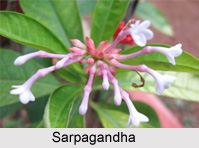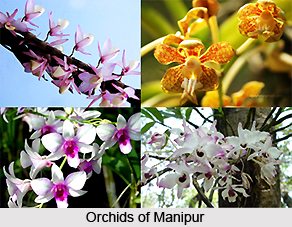 Stork family (Ciconiidae) consists of long legged marsh-inhabiting birds with partially bare tibia, longish necks and heavy pointed tapering bills. They lack a voice-box (syrinx) and are mostly silent except for grunts and clattering of mandibles, especially when breeding. The common Indian resident species are Painted Stork (Mycteria leucocephala) identified by its un-feathered waxy yellow face, long yellow bill, and the rose-pink about its shoulders and wings. The Open-billed Stork (Anastomus oscitans) is greyish white with black wings. The reddish black bill has a characteristic gap between the mandibles believed to help in opening up the larger snails - its favourite food. Possibly the least attractive of Indian storks is the Adjutant (Leptoptilus dubius), so called because of its martial stalking gait. It is black, grey and white with a massive yellowish bill and naked head and neck. Storks feed on fishes, frogs, aquatic arthropods and molluscs. The Adjutant Stork takes carrion in addition.
Stork family (Ciconiidae) consists of long legged marsh-inhabiting birds with partially bare tibia, longish necks and heavy pointed tapering bills. They lack a voice-box (syrinx) and are mostly silent except for grunts and clattering of mandibles, especially when breeding. The common Indian resident species are Painted Stork (Mycteria leucocephala) identified by its un-feathered waxy yellow face, long yellow bill, and the rose-pink about its shoulders and wings. The Open-billed Stork (Anastomus oscitans) is greyish white with black wings. The reddish black bill has a characteristic gap between the mandibles believed to help in opening up the larger snails - its favourite food. Possibly the least attractive of Indian storks is the Adjutant (Leptoptilus dubius), so called because of its martial stalking gait. It is black, grey and white with a massive yellowish bill and naked head and neck. Storks feed on fishes, frogs, aquatic arthropods and molluscs. The Adjutant Stork takes carrion in addition.
Indian Stork is one of the 17 diverse species that are found across the world. Storks are not found in Antarctica. The natural habitat of these birds includes Indian fields, marshes and savannas. Storks are large wading birds that are characterised by grey, white and black feathers and long, tough bills. The basic diets of the birds consist of insects, fish and dead animals. These birds are available mainly in the warmer parts of the world and they prefer drier habitats than the related herons, ibises and spoonbills. These birds do not have a syrinx and are thus mute, producing no bird call. However, the bill clattering is a prominent and most vital mode of communication among the storks at the nest. A number of species are migratory. A large number of these birds eat fish, insects, frogs, earthworms and little mammals or birds. Storks undertake soaring, gliding flight, which helps them in conserving their energy.
The nest of these birds is very big and is at times used for several years. Some of the nests of Storks are recorded to be about three metres in depth and over two metres in diametre. The storks were once believed that they were monogamous, but the same is not completely true. These birds do have a tendency to change their mates after undertaking migration and some even migrate without their mate. They are more attached to their nests as much as their own partners. The storks are thus considered to be one of the large wading birds in India and are characterised by grey, black or white feathers and tough and long bills.











